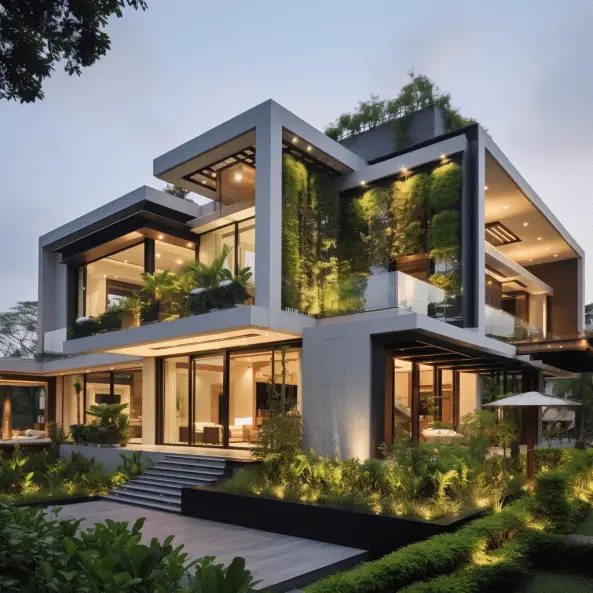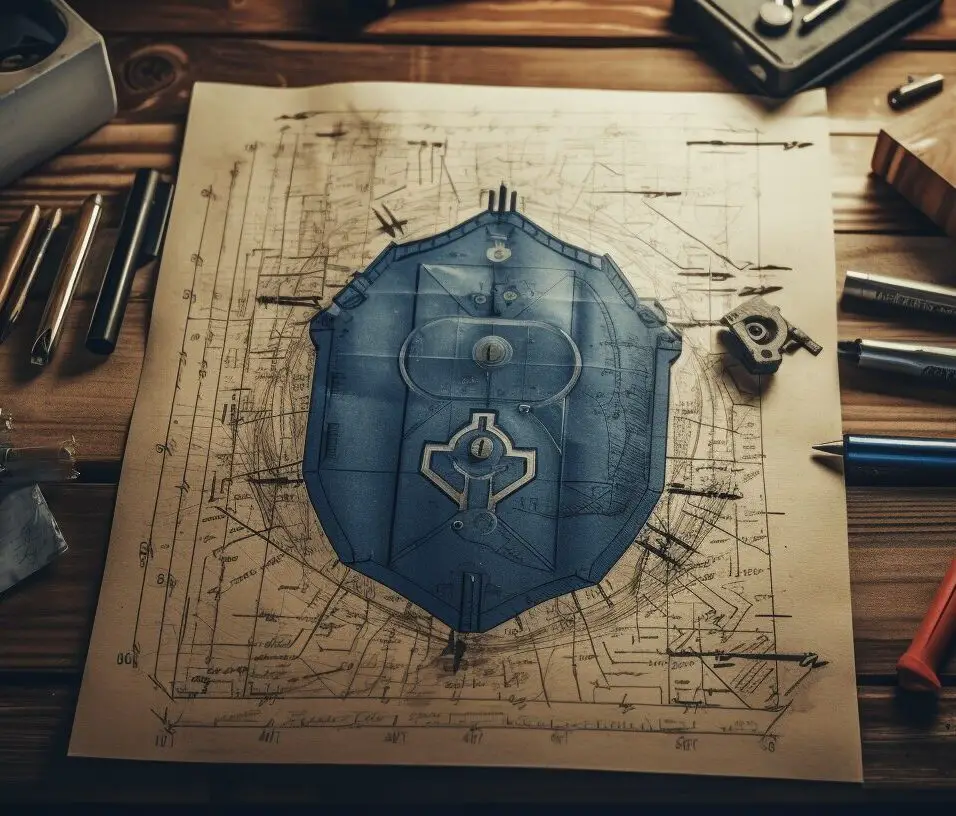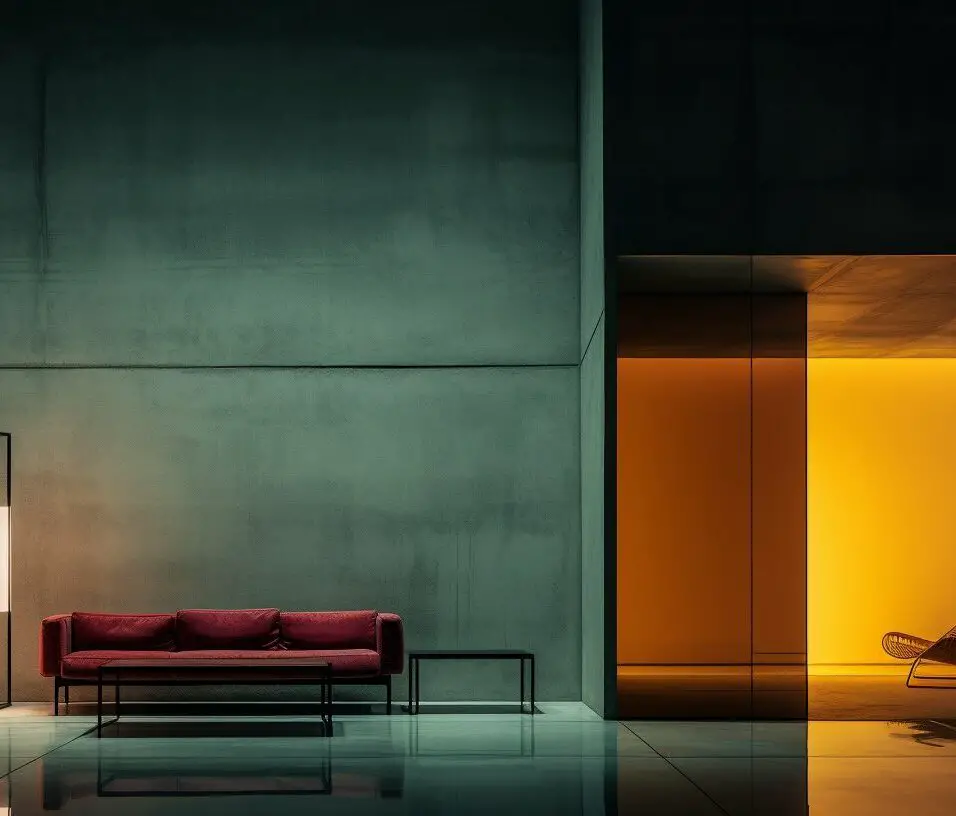House Design: Expert Insights for Your Dream Home
Designing a house involves careful consideration of your lifestyle, needs, and preferences. Whether you choose the path of self-designing or hiring professionals, creating a dream home requires expertise and attention to detail. In this expert guide, I will provide exclusive insights to help you design a comfortable living space that reflects your style and enhances your daily life.
Key Takeaways:
- Designing a house requires careful consideration of your lifestyle, needs, and preferences.
- There are two main approaches to house design: self-designing or hiring professionals.
- Self-designing allows for ultimate control and creativity, but may require technical knowledge and research.
- Hiring professionals brings expertise, creativity, and access to resources, but additional costs should be considered.
- Steps to designing a house include unleashing your imagination, setting priorities and establishing a budget, gathering inspiration, sketching layouts, and consulting with professionals.
Self-Designing vs. Hiring Professionals
There are two main approaches to designing a house: self-designing or enlisting the help of professionals such as architects and interior designers. Each option comes with its own advantages and challenges, and the choice ultimately depends on your personal preferences, level of expertise, and budget.
If you have a strong vision and enjoy being hands-on, self-designing can be a rewarding experience. It allows for ultimate control and creative freedom, where you can bring your ideas to life. However, self-designing also requires a certain level of technical knowledge and research to ensure that your design is structurally sound and meets building codes. It may involve learning about construction techniques, materials, and space planning to make informed decisions.
On the other hand, hiring professionals brings a wealth of expertise, creativity, and access to resources. Architects and interior designers have the knowledge and experience to translate your vision into a cohesive and functional design. They can provide valuable insights on layout optimization, material selection, architectural styles, and current design trends. Collaborating with professionals can save you time and effort, while ensuring that your design meets professional standards.
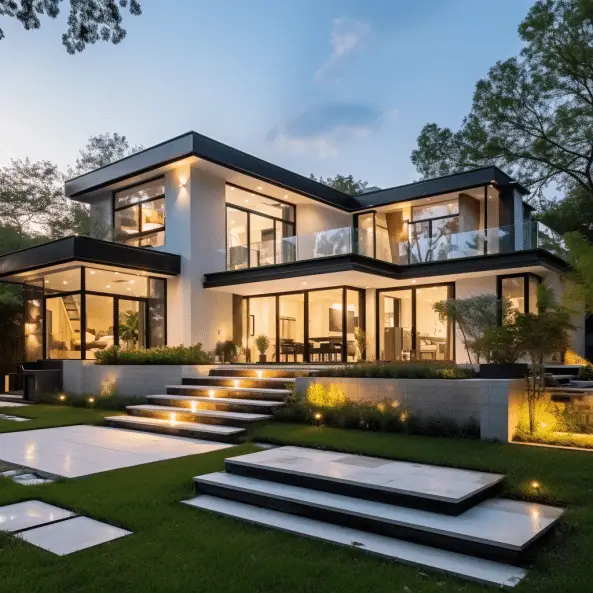
| Self-Designing | Hiring Professionals |
|---|---|
| Ultimate control and creative freedom | Expertise, creativity, and access to resources |
| Requires technical knowledge and research | Additional costs |
| Time-consuming | Professional standards and efficiency |
Ultimately, whether you choose to self-design or hire professionals, designing a house is an exciting journey that requires careful consideration of your lifestyle, needs, and budget. It’s important to weigh the pros and cons of each approach and decide what aligns best with your vision and capabilities. Remember, the ultimate goal is to create a comfortable and stylish living space that reflects your unique personality and preferences.
Unleash Your Imagination
To create a truly remarkable house design, it’s essential to let your imagination roam freely. This is the stage where you can break free from traditional ideas and explore unique concepts that reflect your personality and lifestyle. Imagine the perfect living space that caters to your needs, preferences, and desired style. This is your opportunity to create a haven that embraces your creativity and delivers a sense of fulfillment every time you step through the door.
When unleashing your imagination, think beyond the walls and envision the entire experience of living in your dream home. Consider the layout, flow, and functionality of each room, while infusing your own personal touches. Whether it’s a cozy reading nook tucked away in a quiet corner or a spacious open-concept kitchen perfect for entertaining, let your imagination guide you in creating spaces that cater to your unique lifestyle.
Embracing creativity is the key to designing a house that stands out and resonates with your soul. Don’t be afraid to mix and match different design elements, experiment with colors and textures, and incorporate unexpected details. Remember, this is your chance to create a space that inspires and delights you every single day.
As Picasso once said, “Everything you can imagine is real.” So why not transform your imagination into a reality by infusing it into your house design? Set your creativity free, and watch as your dream home takes shape before your eyes.
Priorities, Budget, and Inspiration
Setting priorities and establishing a budget are crucial steps in the house design process, as is gathering inspiration from a variety of sources. When it comes to priorities, consider what aspects of your dream home are most important to you. Is it a spacious kitchen for entertaining, a home office, or a cozy reading nook? Identifying your priorities will help you allocate your budget accordingly.
Speaking of budget, it’s essential to determine how much you’re willing to spend on your house design project. Take into account not just the construction costs, but also the expenses for furnishings, decor, and any professional assistance you may require.
To ensure you stay within your budget, consider making a list of must-haves and nice-to-haves. This will help you prioritize your spending and focus on the elements that are most important to you. Remember, there are often creative and cost-effective alternatives to achieve your desired look.
Inspiration
One of the most exciting parts of designing a house is gathering inspiration. Look to a variety of sources to spark your creativity and discover new ideas. Magazines, websites, and social media platforms like Pinterest and Instagram are excellent places to find inspiration and see how others have designed their dream homes. Create a mood board or save images that resonate with you to reference throughout the design process.
Consider seeking inspiration beyond just the visual aspects of house design. Think about how you want your home to feel and function. Are you drawn to a minimalist aesthetic, a modern farmhouse vibe, or a cozy cottage atmosphere? Take note of the styles and atmospheres that resonate with you and incorporate them into your design plans.
Remember, designing a house is a personal and creative journey. By setting priorities, establishing a budget, and gathering inspiration, you’ll be well on your way to creating a home that not only reflects your style but also caters to your needs and desires.
Sketching Layouts and Modifying Templates
Once you have a clear vision for your house design, it’s time to start sketching layouts and exploring template options. Sketching layouts allows you to visualize how different rooms and spaces will flow together, ensuring functionality and practicality. It’s like creating a blueprint for your dream home.
One approach to sketching layouts is to start with a blank canvas and draw from scratch. This allows for complete customization and flexibility, enabling you to design each space exactly as you envision it. However, it requires technical knowledge and skill in architectural drafting.
If you’re not comfortable with drawing from scratch or want to save time, modifying templates can be a helpful starting point. Many architectural software programs and online platforms offer pre-designed templates that you can customize to suit your needs. These templates provide a framework to work with, eliminating the need for extensive technical knowledge.
| Advantages of Sketching Layouts | Advantages of Modifying Templates |
|---|---|
|
|
Remember, the layout is the foundation of your house design, so take the time to experiment with different options and consider factors like room sizes, traffic flow, and functionality. Don’t be afraid to think outside the box and explore unconventional layouts that reflect your personal style and preferences.
Considering Functionality and Flow
When sketching layouts or modifying templates, it’s crucial to consider functionality and flow. Think about how you will use each space and how it will connect to other areas of your home. For example, place the kitchen near the dining area for easy access during meals or position the bedrooms away from noisy areas like the living room or home office.
Additionally, consider the flow of natural light and ventilation in your design. Position windows strategically to maximize natural light and take advantage of scenic views. Incorporate open spaces or create zones within your home that allow for privacy and separation of activities.
Remember, the layout is just the starting point of your house design journey. It’s a creative process that allows you to shape your living space according to your unique needs and preferences.
Consulting with Professionals
Seeking professional input and advice can greatly enhance your house design journey, as experts bring valuable knowledge and fresh perspectives to the table. Whether you decide to work with an architect, interior designer, or both, their expertise can help you navigate the complexities of the design process and ensure your vision becomes a reality.
When consulting with professionals, it’s essential to communicate your goals, preferences, and budget clearly. This will allow them to understand your vision and guide you towards practical and actionable solutions. They can provide valuable insights into space planning, material selection, and construction techniques, helping you make informed decisions that optimize both aesthetics and functionality.
The Benefits of Collaborating with Architects
Architects are trained to create innovative and functional designs that meet building codes and regulations. They possess technical expertise in structural engineering, spatial planning, and sustainable design. Collaborating with an architect can result in a well-thought-out home that maximizes natural light, ventilation, and energy efficiency.
Architects also have a vast network of industry professionals, including contractors and suppliers. They can help you find the right team to execute your project, ensuring quality craftsmanship and timely completion. Additionally, architects can assist with obtaining necessary permits and approvals, saving you time and unnecessary headaches.
The Creative Touch of Interior Designers
Interior designers specialize in creating harmonious and visually appealing spaces. They have a keen eye for color schemes, finishes, and furniture selection. Collaborating with an interior designer can help you bring your personal style to life and create a cohesive design that reflects your personality and preferences.
Interior designers can also assist with space planning, ensuring every square foot is optimized for your specific needs. They can provide detailed drawings and renderings, allowing you to visualize the final design before construction begins. Additionally, interior designers have access to a wide range of suppliers and can help you source unique and high-quality materials and furnishings.
In conclusion, consulting with professionals is a valuable step in the house design process. Architects and interior designers bring expertise, creativity, and access to resources that can elevate your design and ensure a successful project. By working collaboratively, you can create a home that is both aesthetically pleasing and functional, tailored to your unique lifestyle and preferences.
Finalizing Plans and Making Decisions
As you approach the final stages of your house design, it’s time to make detailed decisions on lighting, finishes, and furniture placement. These choices will bring your vision to life and create the ambiance and functionality you desire in your dream home.
Lighting: One aspect to consider when finalizing your plans is the lighting design. Proper lighting can enhance the atmosphere and functionality of each room. Take into account natural light sources, such as windows and skylights, as well as artificial lighting options like recessed lights, pendant lights, and chandeliers. Strategically placed lighting can highlight architectural features, create focal points, and set the mood in different areas of your home.
Finishes: Another important aspect to finalize is the choice of finishes for your walls, floors, and ceilings. Consider the overall style and aesthetic you want to achieve. Are you going for a modern, minimalist look or a cozy, rustic feel? Think about the textures, colors, and patterns that resonate with your personal taste. Remember that finishes not only impact the visual appeal but also affect the durability and maintenance of your home.
Furniture Placement: The final decision to make is the placement of furniture within each room. A well-thought-out furniture arrangement can maximize space, promote flow, and create functional zones. Consider the size and scale of your furniture pieces in relation to the room dimensions. Take into account traffic patterns, focal points, and the purpose of each area. It’s a good idea to create a furniture layout plan or consult with an interior designer for expert guidance.
| Lighting | Finishes | Furniture Placement |
|---|---|---|
| Create ambiance | Aesthetic appeal | Optimize space |
| Highlight features | Durability and maintenance | Promote flow |
| Set the mood | Texture, color, and pattern | Create functional zones |
Remember, the final stages of house design are crucial in bringing your vision to life. Attention to detail is essential in achieving the desired atmosphere and functionality in your dream home. By making informed decisions on lighting, finishes, and furniture placement, you’ll create a space that truly reflects your style and enhances your everyday living experience.
Aesthetics in House Design
Aesthetics play a crucial role in house design, allowing you to create a visually pleasing and cohesive living environment. By carefully considering the aesthetics, you can transform your house into a space that reflects your personal style and brings you joy every time you step through the door.
When designing your home, it’s important to think about the overall vibe you want to achieve. Do you prefer a modern and minimalistic look, or are you drawn to a more rustic and cozy atmosphere? Consider the colors, textures, and materials that will best embody your desired aesthetic.
In addition to the overall aesthetic, paying attention to the details can make a significant impact on the design of your home. From the finishes on your walls and floors to the lighting fixtures and furniture choices, every element should work together harmoniously to create a cohesive and inviting space.
| Element | Considerations |
|---|---|
| Colors | Choose a color palette that complements your desired aesthetic. Consider the mood each color evokes and how it will interact with the natural light in your home. |
| Textures | Experiment with different textures to add depth and visual interest to your space. Consider incorporating elements such as textured wallpapers, natural materials, or patterned fabrics. |
| Furniture | Select furniture that aligns with your aesthetic and provides both comfort and functionality. Pay attention to the lines, shapes, and materials used in the pieces to ensure they enhance the overall design. |
| Lighting | The right lighting can dramatically enhance the look and feel of your home. Consider the different types of lighting, such as ambient, task, and accent lighting, and how they can be used to create a desired atmosphere. |
Remember, the aesthetics of your home should be a true reflection of your personal taste and style. Don’t be afraid to experiment and showcase your unique personality through your design choices. With careful consideration of aesthetics, you can create a house that not only looks beautiful but also nurtures a sense of comfort and wellbeing for you and your loved ones.
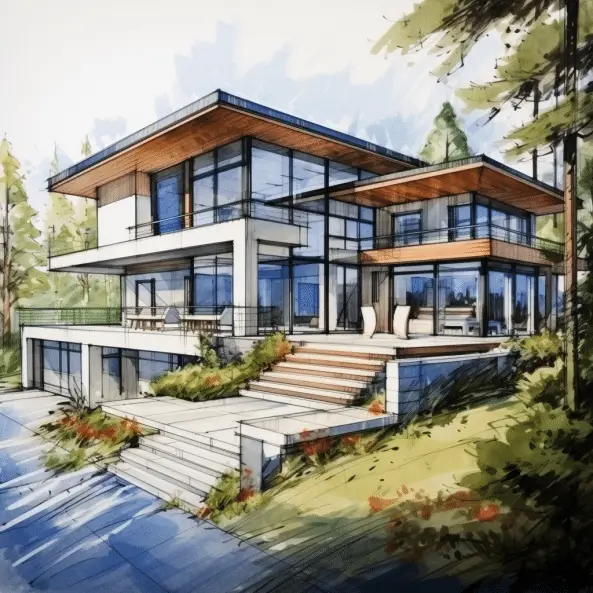
Conclusion
In conclusion, designing a house is a meticulous process that requires careful consideration of various factors to create a comfortable and stylish living space. Whether you choose to self-design or hire professionals, the goal is to bring your dream home to life.
When self-designing, you have complete control over the project and the opportunity to unleash your imagination. However, it is important to be prepared for the challenges that may arise, such as the need for technical knowledge and extensive research.
Hiring professionals, such as architects and interior designers, brings valuable expertise, creativity, and access to resources. They can provide guidance and turn your ideas into a reality, but it is important to keep in mind the additional costs involved.
Throughout the house design process, it is crucial to set priorities, establish a budget, and gather inspiration from various sources. Sketching layouts and modifying templates can help visualize your ideas, while consulting with professionals can provide valuable insights and ensure the project stays on track. Finally, finalize your plans and make decisions on lighting, finishes, and furniture placement to complete the vision.
By carefully considering all these factors, you can create a house that not only meets your needs and preferences but also reflects your unique style. With the right approach and attention to detail, your house can become the comfortable and stylish living space you’ve always dreamed of.
FAQ
Q: What are the two main approaches to designing a house?
A: The two main approaches to designing a house are self-designing or hiring professionals such as architects and interior designers.
Q: What are the advantages of self-designing?
A: Self-designing allows for ultimate control and creativity in the design process.
Q: What are the challenges of self-designing?
A: Self-designing may require technical knowledge and research in order to execute the design effectively.
Q: What are the advantages of hiring professionals?
A: Hiring professionals brings expertise, creativity, and access to resources that can enhance the design process.
Q: What are the additional costs associated with hiring professionals?
A: Hiring professionals for house design may come with additional costs as their expertise and services are valuable.
Q: How can I unleash my imagination when designing a house?
A: Unleashing your imagination involves thinking creatively and outside the box to create a unique and personalized living space.
Q: How do I set priorities and establish a budget for house design?
A: Setting priorities and establishing a budget for house design involves considering your needs, lifestyle, and financial capabilities.
Q: Where can I gather inspiration for my house design?
A: You can gather inspiration from various sources such as magazines, websites, and social media platforms that showcase home designs and interior aesthetics.
Q: How can I sketch layouts for my house design?
A: Sketching layouts involves visualizing the spatial arrangement of rooms and functional areas in your house design.
Q: Can I modify templates for my house design?
A: Yes, modifying templates can be a helpful starting point in the house design process, allowing you to customize existing designs to fit your preferences.
Q: Why is consulting with professionals important for house design?
A: Consulting with professionals brings expertise, creativity, and access to resources that can enhance the overall design of your house.
Q: What should I consider when finalizing plans for my house design?
A: When finalizing plans, it is important to consider lighting, finishes, and furniture placement to ensure everything aligns with the overall design vision.
Q: How important are aesthetics in house design?
A: Aesthetics play a crucial role in house design, as they create a visually appealing and harmonious space that reflects personal style and preferences.



